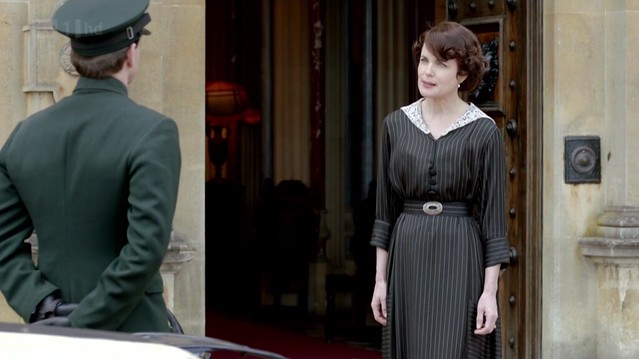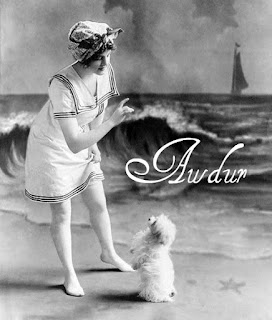My diet has evolved greatly over the years. 10+ years ago we were a typical bagels-and-cereal family. Pop tarts were a rarity and we bought the plainer cereals, so I thought we were doing pretty good. Early in my elementary years, my mother began to read more about health and the bagels all but disappeared, while [now organic] cereal was relegated to Sundays. We began adding things like buckwheat porridge to our breakfast fare and reducing prepackaged dinners. Fast forward a few years (with various minor diet changes) and my mother decided to try an anti-fungal diet, which involved eliminating all sugars completely (I mean, seriously, you could only eat green apples and berries. Occasionally.). I put up a fit about this, but adjusted. Then we became friends with a passionate vegan. Not only is she passionate, she is educated. She showed us documentaries, articles, and books all demonstrating the detrimental effects of animal products and the revolutionized health of those who decided to eschew them. I began to feel that, while I would never want to be a vegan, it was no doubt the ideal state of being, if we only had the will power to live that way. We ate less and less meat, and, never being a huge meat eater, it became unappealing to me. For several years, I was pescatarian (I never gave up fish entirely). Along the way, I had picked up the idea that if the National Dairy Council a doctor suggests you eat something, you should definitely do the opposite.
Then our diets changed again, by necessity this time, and it became clear that avoiding meat was simply too difficult. Not that I ever started craving meat, but it was one of the few things on the menu. I had really become a vegetarian by habit; I was sure there were good reasons to avoid meat, but I couldn't really explain it. I remembered reading that the highly-touted calcium in milk wasn't actually abled to be absorbed by the body, though I didn't know the exact mechanism by which this was explained. We were also gluten-free at home, but this too had become habitual over the years, and, without a good reason to avoid it, I continued to indulge in wheat when traveling, with friends, etc.
For a while, I had an "everything in moderation" philosophy, and just generally tried to avoid engineered food or eating the same thing more than three times a week. I tried dairy free a few times, but often ended up caving in to eat my favorite breakfast, yogurt and granola. So I just ended up with a lot less diary and a lot more guilt.
Through all this, I've been what most people would consider "healthy." My weight is fine, I don't have any serious health concerns, etc. But I have had persistent skin issues, and lately, my teeth have become seriously demineralized. Of course there is a place for conventional medicine and diet alone cannot change every problem. However, I have tried conventional medicine, to no avail, and I also believe that what you eat each day is either healing your body or the slowest form of poison.
Not wanting to face my first cavity or pump my body full of fluoride, I read the book Cure Tooth Decay by Rami Nagel. Similar to the paleo approach, this book is based on the research of Weston Price in the early twentieth century, when he studied the diet of primitive populations who had excellent health, especially oral health. He found that dairy and meat were not the culprits: many of the societies he studied consumed meat, eggs, and dairy on a daily basis. By contrast, grains and sugars were either absent, or extensively prepared, by soaking, cooking and/or fermentation. In reading this book, I have come to the reluctant realization that my nearly-vegan, high carb diet was either the cause or collaborator in destroying my teeth.
However, this causes a lot of cognitive dissonance. After believing in the value of veganism for so long (at least believing that animal products should be consumed in small quantities), it is hard to accept that all of that wasn't true, at least for my body. Wait, you mean I should be drinking milk daily? So is the medical profession actually right about this? What about other things?
Now, if you look a little further into my diet plan (modified paleo/keto), you'll see that it's a far cry from the Recommendations By American Medical People. Yes, I'm accepting the need for milk, but I don't think it should be pasteurized or antibiotic raised. Contrary to the mainstream acceptance of combining sugars with added vitamins, I believe in getting nutrients straight from food and eliminating sugary foods not found in nature. And most revolutionary of all (to me), I'm going to drastically decrease my grain consumption. What if vegan advocates were looking at the Standard American Diet and thinking the animal products were the reason for such ill health in America, when really its the grains that are the culprits? (Plus the opioid epidemic, the antibiotic age, vaccinations, GMOs, pesticides and over-processing of food).
Going grain-free works out, since my mum has been working towards keto. I've been decreasing the grain content in our meals already (looking at you, almond flour and spiralizer!). But oh my goodness, friends, no oats in my yogurt??? I did without yogurt for more than six months. Now that we're back together again, I'm not sure I can break up with my oats.
Going grain-free works out, since my mum has been working towards keto. I've been decreasing the grain content in our meals already (looking at you, almond flour and spiralizer!). But oh my goodness, friends, no oats in my yogurt??? I did without yogurt for more than six months. Now that we're back together again, I'm not sure I can break up with my oats.
Summarizing the tooth protocol I have been following, then:
- Using remineralizing toothpaste from Wellness Mama
- Oil pulling (I'll be starting this in June, when I'll have more time in the morning) 10-20 minutes a day
- Eating nearly grain free, and for those grains I do eat:
- Brown rice: soaking to remove phytic acid. Soak brown rice in water 16-24 hours. Reserve 10 percent of soaking liquid (discard remaining). Cook rice with clean water. The next time you make rice, add the 10% soaking liquid reserved from last batch. Repeat this cycle. As long as you have some starter on hand, almost all the phytic acid is removed.
- Oats. The author does NOT recommend oats in any way, but he also made a point of saying that if you ARE eating grains, you can somewhat balance the effect by making sure you have a healthy fat with it. For me, this means yogurt/granola, yogurt in pancakes, etc. If I'm still not noticing effects I will *gulp* eliminate it completely.
- Eliminating most sugars
- I was already doing this for the most part, but I'm going to stick to these three added sugars: honey, maple syrup, stevia.
- Avoiding high sugar fruits as much as possible and combining with a healthy fat (e.g. green apples and cheese)
- The author pointed out that teeth can drastically improve from just one good meal a day, even when the other parts of the diet are unchanged. This is encouraging to me, because the thought of overhauling my diet is intimidating, even as a person who has done this multiple times! Luckily, as mentioned above, my parents are starting the keto diet, and several of the protocols (emphasis on healthy fats and protein, grain free, avoidance of high-carb fruits) match up with the remineralizing recommendations.
- Upping my vitamins C, D &A and calcium uptake through broccoli, bell peppers, sauerkraut, cooked green vegetables, grass fed dairy products, and cod liver oil
- Bone broth as much as possible. I haven't yet felt comfortable drinking this by the glassful, but that is one of my goals for June.
- Possibly trying blotting: curetoothdecay.com/blotting
I'm excited about the possibility of healing my teeth, but also tentative. I don't doubt the ability to heal oneself through diet, but I doubt my ability to read my body and know what is best. It seems like there is so much contradictory research and debate, along with real life stories of healing on all sides. However, I'm also super excited about combining my dietary experiments with homeopathy! My mother and I have started a homeopathy group to learn more about this fascinating, time-tested medicine and I have been so encouraged to hear the stories of people who have been healed. If you've never heard of it, I suggest you check out https://studygroups.joettecalabrese.com.
That's all for today, friends. Because some people might go into shock if I post three times in two days. : )
P.S. How do you feel about home birth?
That's all for today, friends. Because some people might go into shock if I post three times in two days. : )
P.S. How do you feel about home birth?























